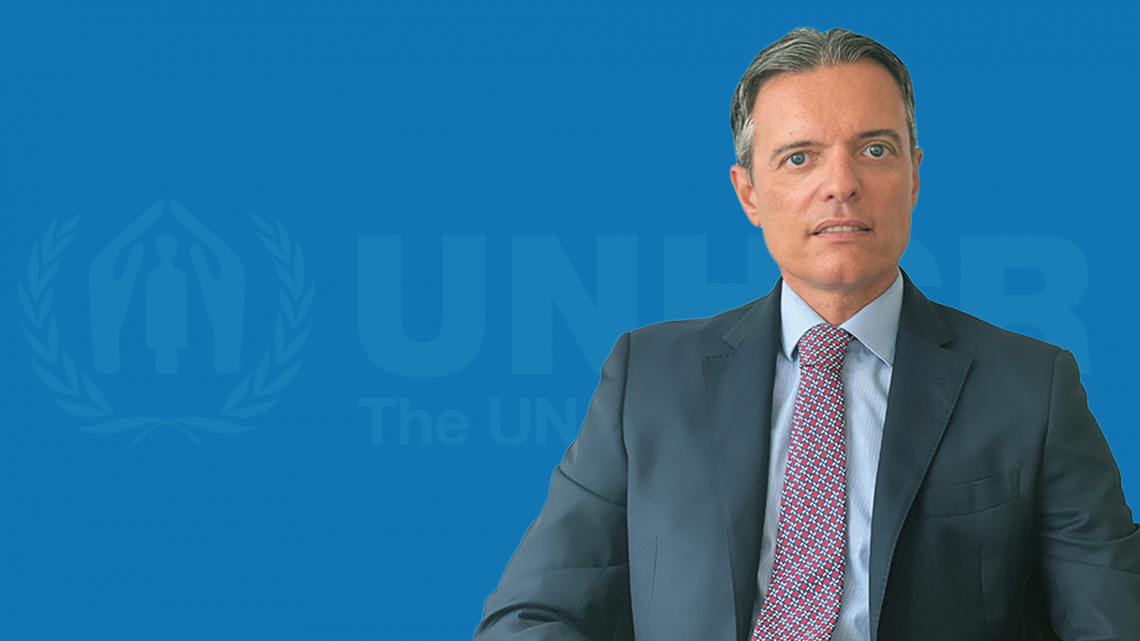
An unprecedented arrival of Haitians turned Mexico into one of the top three asylum destinations in the world in 2021. But streamlined management could turn the situation into an opportunity, both for Mexico and for the migrants, according to the United Nations High Commission for Refugees Representative in Mexico.
Giovanni Lepri told a Duke audience that while not all the migrants are seeking asylum, it’s currently the primary way for Haitians to pursue a legal status in Mexico.
“There should be alternatives,” Lepri said at a webinar organized by the Duke University Center for International and Global Studies (DUCIGS).
In 2021, the Mexican Commission for Refugees (COMAR), responsible for adjudicating asylum claims, recorded 131,414 applications. Almost half of them were filed by Haitian nationals or Haitians born abroad and naturalized there. Only 35 percent of them met protection eligibility.
“What happens with the rest?” Lepri asked.
The Local Integration Program – a UNHCR initiative that aims to transfer migrants with refugee status to parts of the country where housing, employment, and education are more accessible – is one possibility, Lepri said.
That program created a network of 260 companies, both international and Mexican, that integrate the refugees into the workforce. Lepri suggested it could be expanded to migrants who are not recognized as refugees.
Embracing this idea in practice, UNCHR and the United Nations’ International Organization for Migration (IOM) created a pilot project which, in agreement with the Mexican government, seeks to identify people who want to stay in Mexico and who speak Spanish. The program extends to those select participants the same opportunities as those offered to recognized asylum applicants.
“It’s a win-win, because all those jobs are in the formal economy,” Lepri said. “They become taxpayers. If you take the 16,000 individuals in the integration program, every year they would generate $5 million in taxes to their community.”
“This is not charity, not an act of generosity. There is an economic impact,” Lepri said, adding that Mexico is an “open and welcoming country” and one of the 15 major economies in the world, with an active labor market. “Most of the Haitian migrants are in working age and they already speak Spanish. There are challenges, but also a number of opportunities,” he said.
Dr. Piotr Plewa, a Duke visiting research scholar who has written about the recent trend in Haitian migration to Mexico, moderated the event. He asked Lepri about the reason behind this spike, and the legal status of Haitian migrants in the South American countries they were in before heading north.
“We can’t have a one-size-fits-all answer,” Lepri said. Brazil, for example, had a workforce shortage ahead of the Rio Olympics and the soccer World Cup, right around the time of Haiti’s earthquake, which prompted many Haitians to leave the country after 2010.
“There was an opening,” Lepri said, “and Brazil was very pragmatic in offering temporary visas not tied to an asylum process.” Then COVID happened, and a strong devaluation of Brazil’s currency impacted the value of Haitians’ remittances.
“In general, most of the Haitians who moved to Mexico had a legal status, but not as refugees or people seeking humanitarian protection,” Lepri said.
Plewa asked if the prospect of asylum in the U.S. could also be driving the migration.
“The indications we have from the work we’ve done with refugees say that Mexico can also be a country of destination,” Lepri said. Some 3,500 Haitian nationals who arrived in 2016, and settled right at the border between Mexico and the U.S., in Tijuana, in a community some call Little Haiti.
“They found possibilities in Mexico, even while being so close to the border,” Lepri said.
The change in U.S. administration and the perception of “an opening” might have prompted some to move North, Lepri said.
“This might have been one of the variables. But I don’t think it was the main variable,” he said.
The event was introduced by Giovanni Zanalda, Director of the Duke University Center for International and Global Studies and was co-sponsored by the Duke Center for Latin American and Caribbean Studies (CLACS.)
Watch the full webinar here.